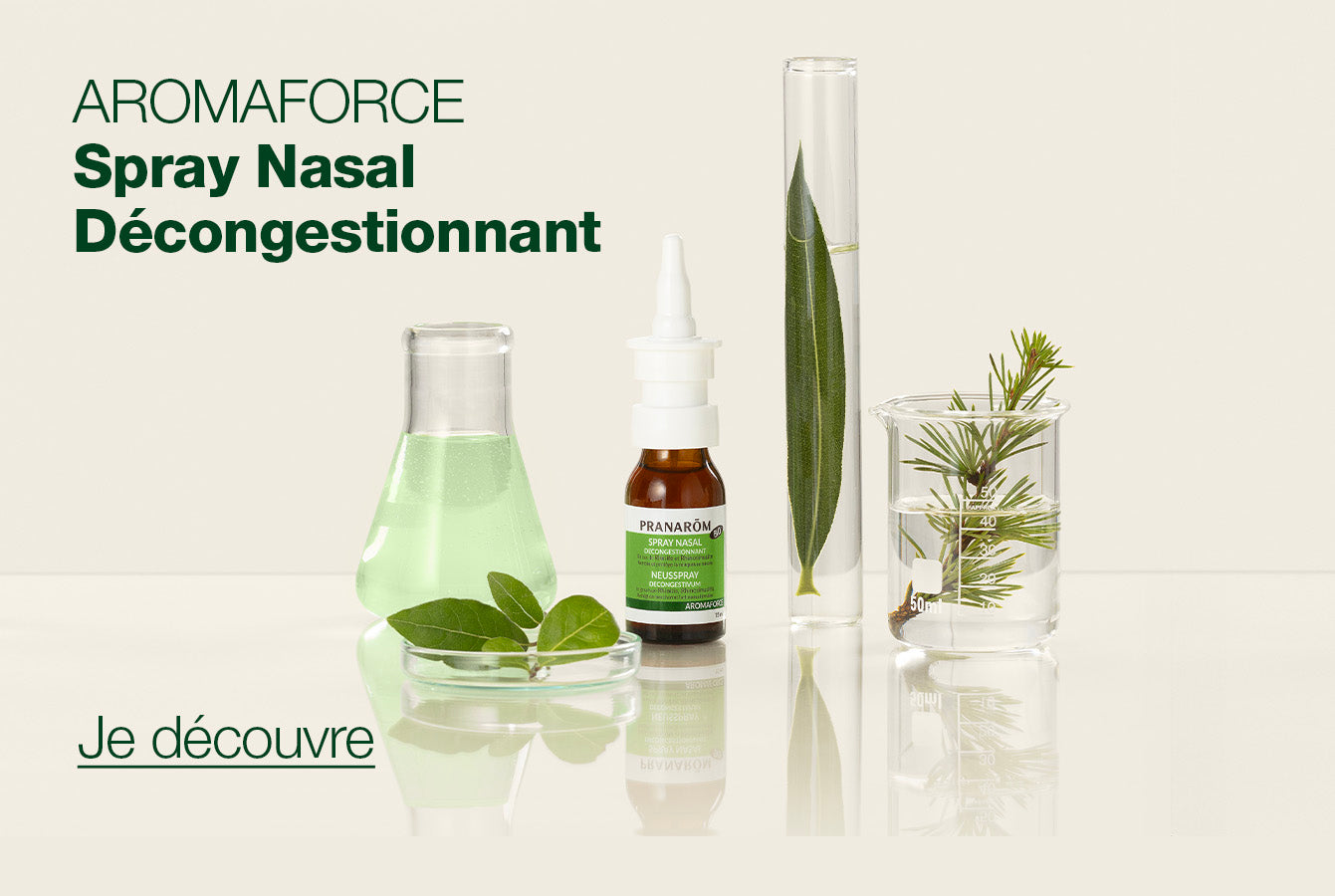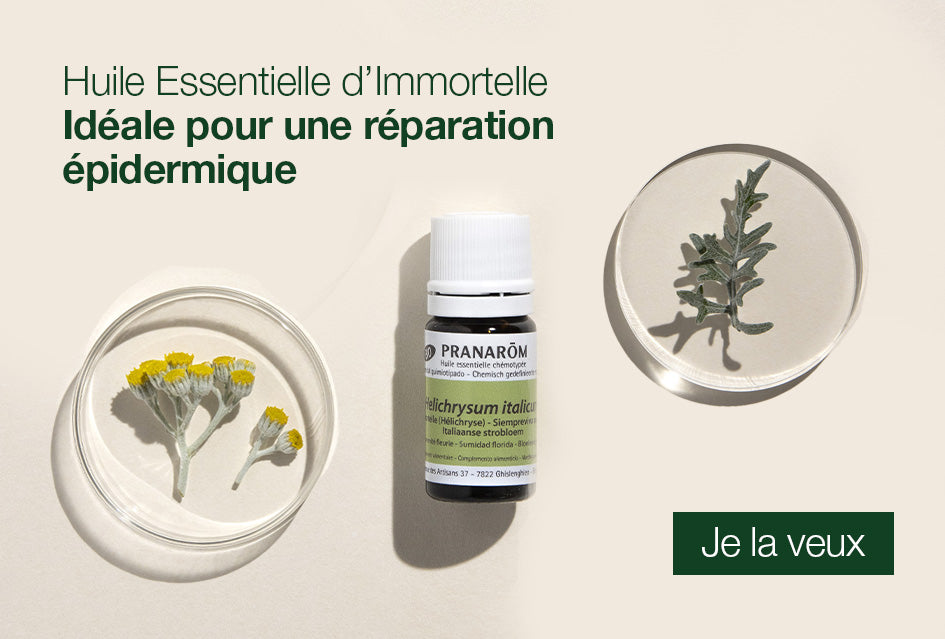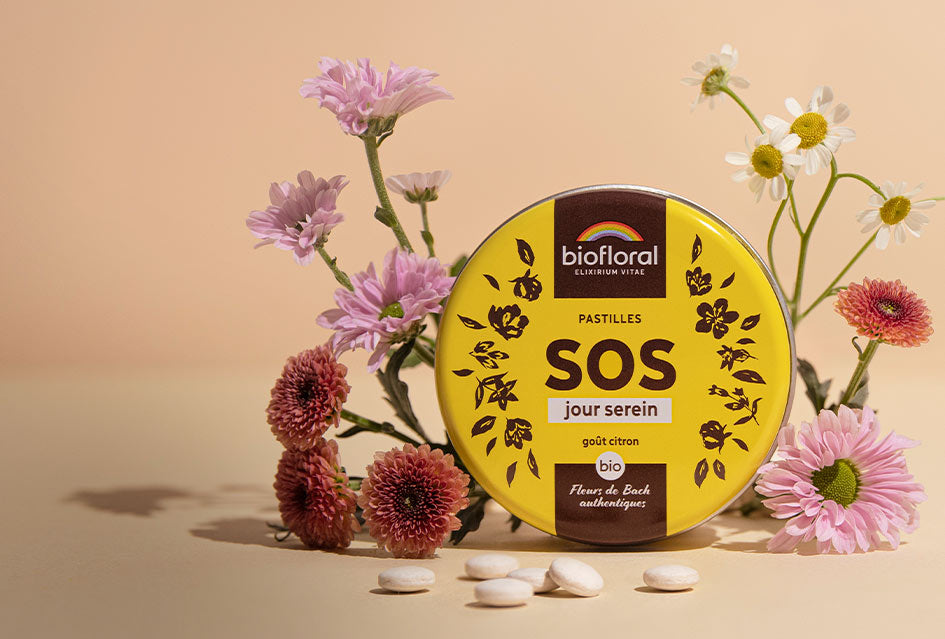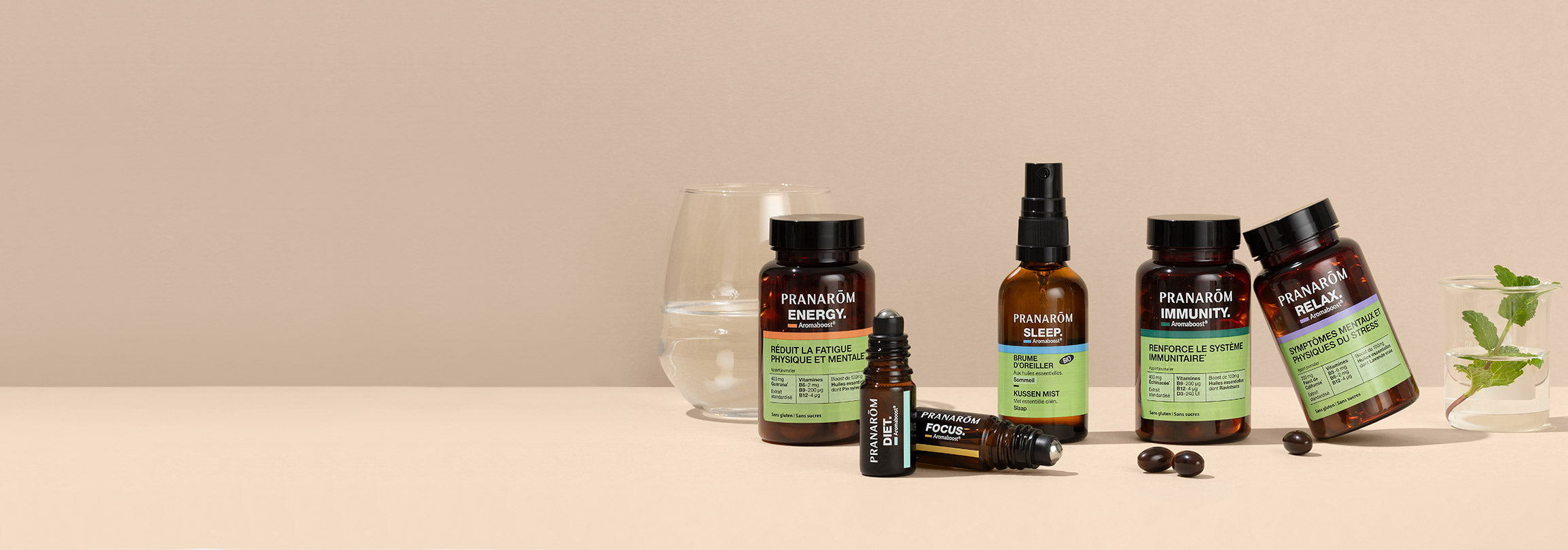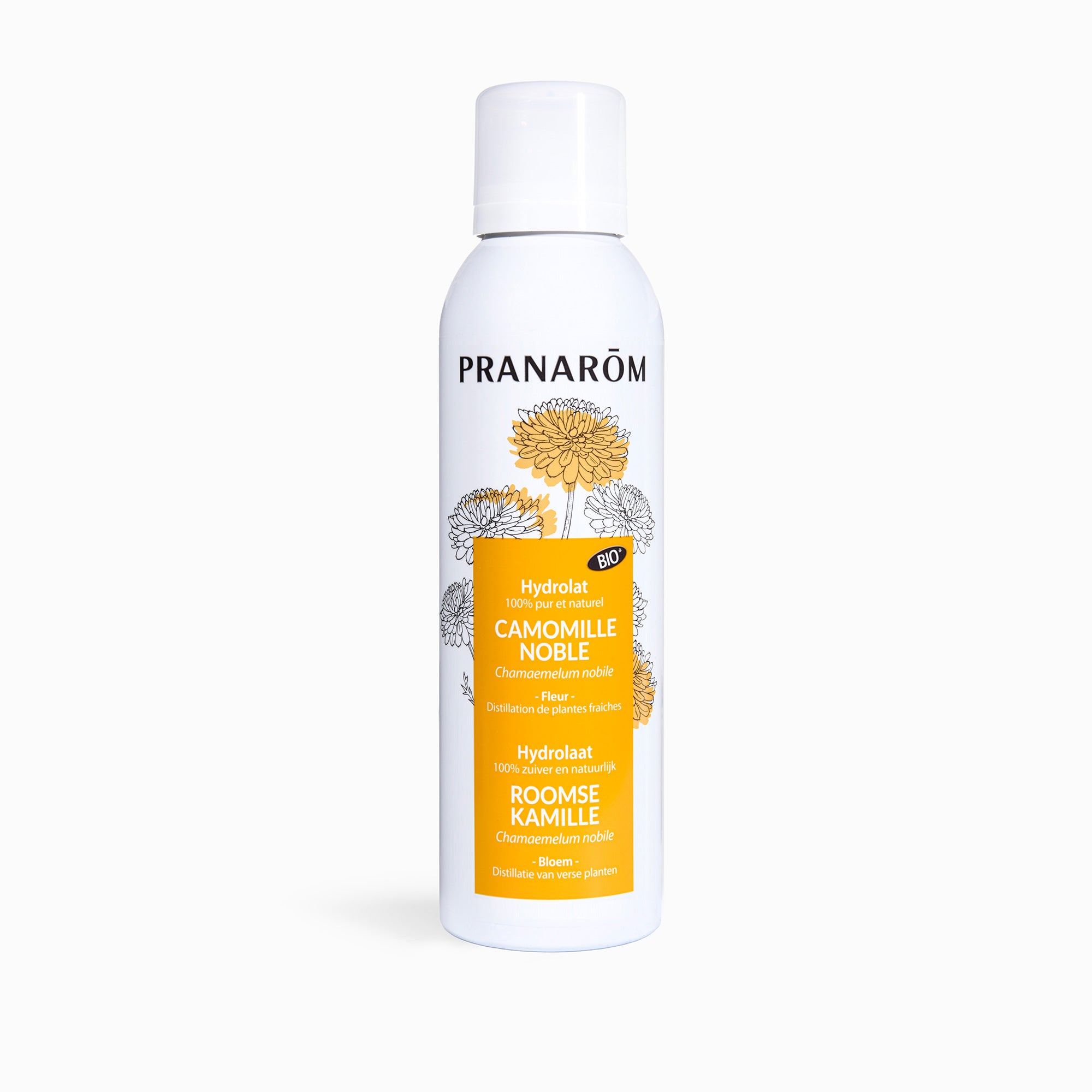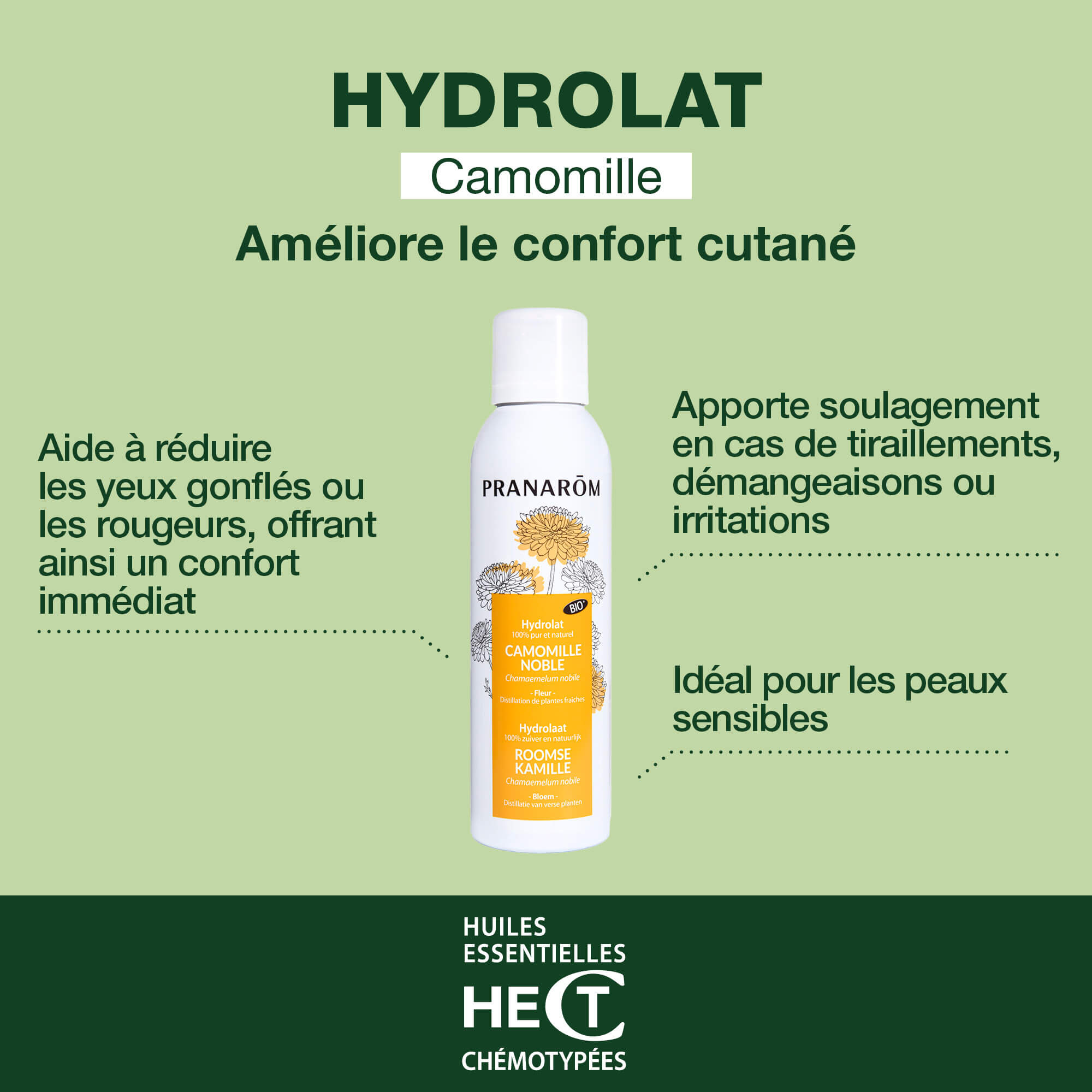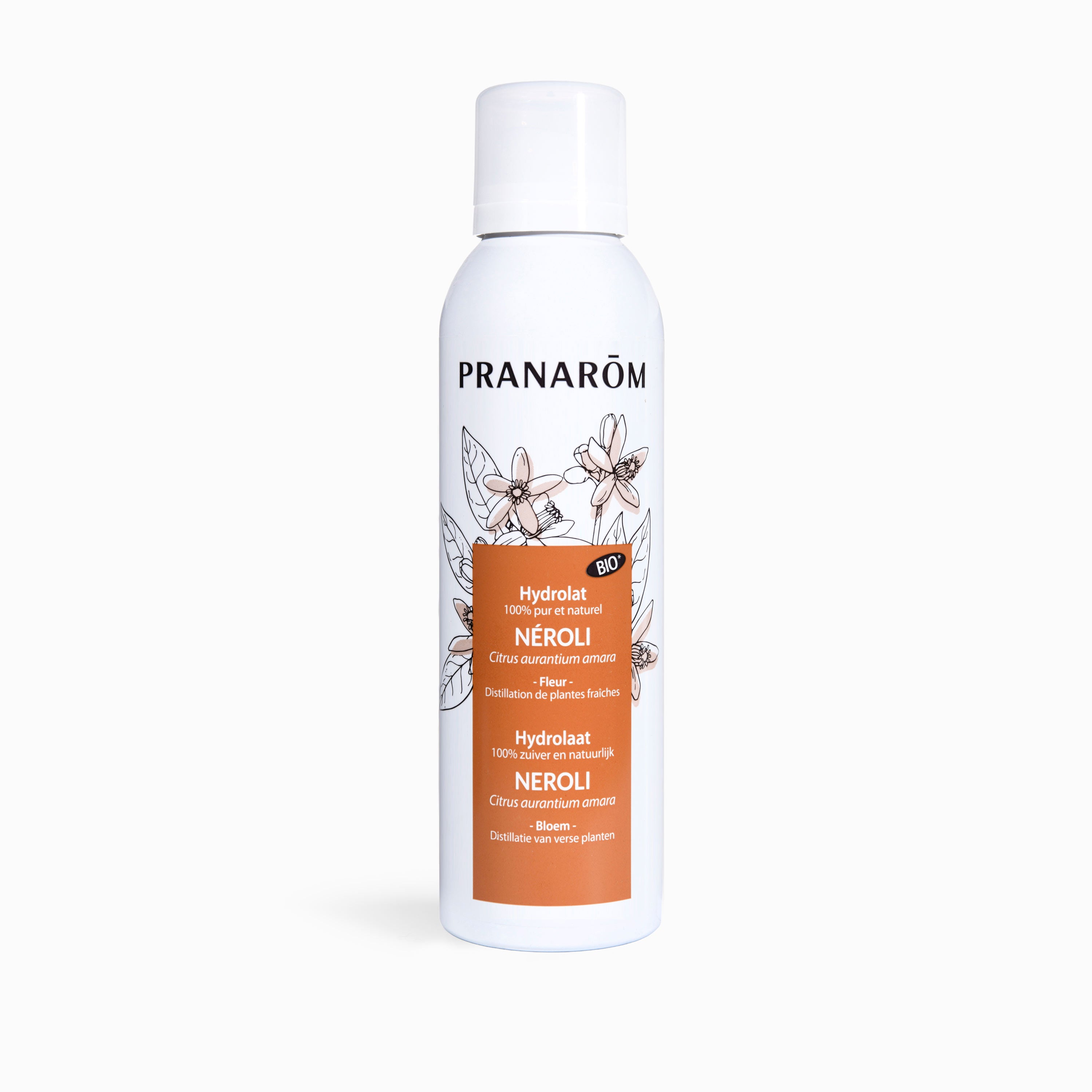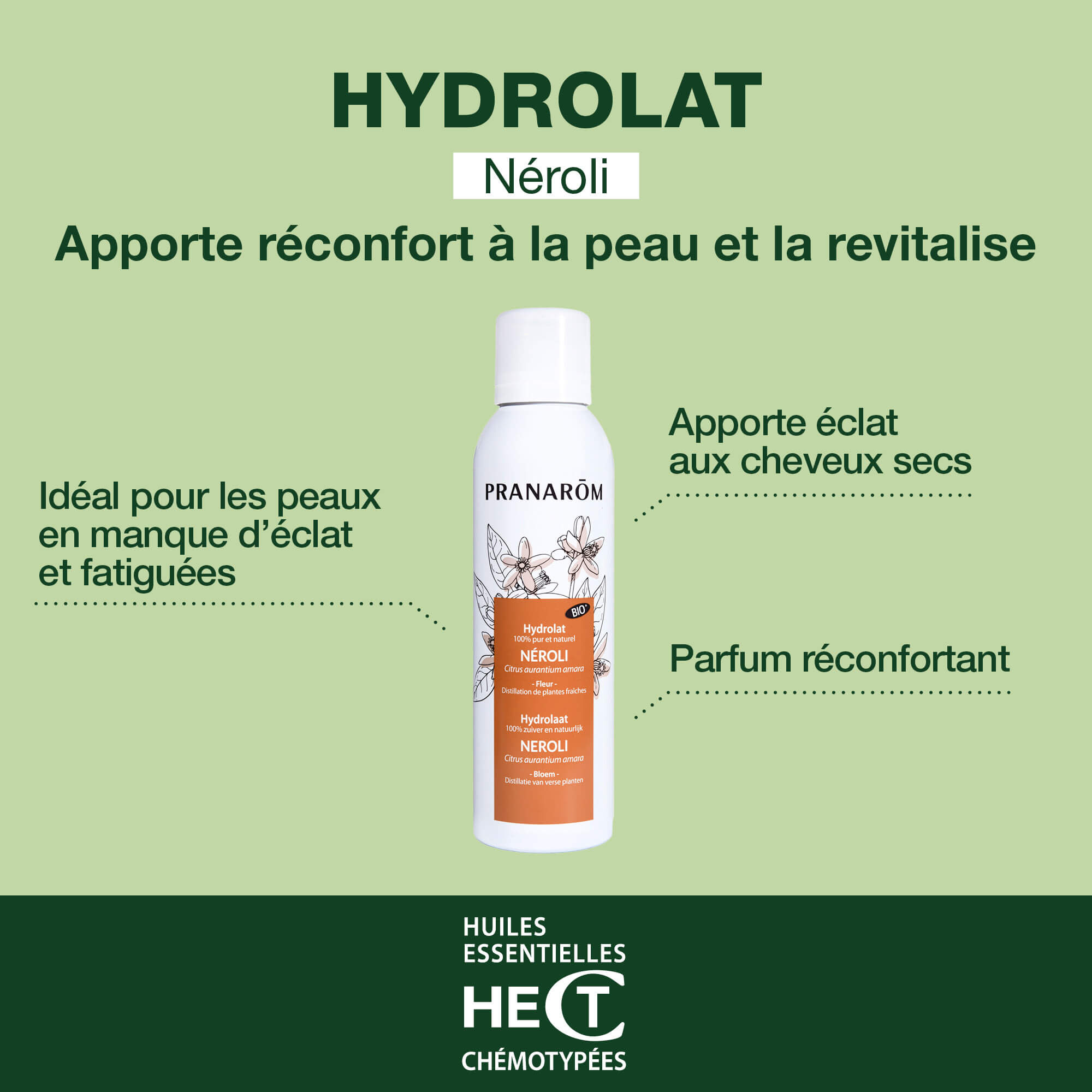A hydrosol has different properties from the essential oil produced at the same time as it during distillation. This can be seen in its chromatographic profile. There is therefore no question of using it as a “diluted essential oil” but from a complementary perspective. We are therefore delighted by all this potential for new discoveries in herbal medicine. Here are a few.
Noble Chamomile HACT – Dry, inflamed, reddened skin
The biochemical composition of Chamomile Noble HACT mainly directs it against inflammation at all levels of the body, especially when there is a nervous or emotional component. It is particularly well accepted by the skin and mucous membranes. We will favor it against:
- Nervous, atopic eczema
- Skin and scalp psoriasis
- Pruritus, itching, hives
- Cracks, chapped skin, small wounds
- Rosacea
- Stress, restlessness, nervousness
- Slow digestion, bloating, hiccups
- Spasms of all locations
- Early skin and tissue degeneration
andnbsp; HACT of Sand Immortelle or Italian Helichrysum – Mature, dry and sensitive skin A true treasure for suffering skin , Immortelle's HACT is distinguished by the presence of molecules which give it privileged uses against:
- Sunburns, burns, scrapes
- Itchy skin, eczema, allergies, psoriasis
- Wrinkles
- Heavy legs, Rosacea, Spider veins
- Hemorrhoids
- Hematomas
- Dental pains
It takes 3000 to 4000 kg of plants to obtain barely 1 liter of Melissa officinale essential oil. Its HACT is therefore a precious liquid, whose presence of terpene alcohol offers very interesting properties against:
- Acne, eczema, psoriasis, dermatitis
- Skin, oral and vaginal mycoses
- Restlessness, excitement, stress, anger
- Gloom, sadness, sorrow, depression
- Mosquito and chigger bites
andnbsp; If we combine these 3 hydrosols, we obtain a lotion with super soothing properties to use for burns, sunburn, aftershave or hair removal, baby bottoms or even in case of itching. andnbsp; If we replace Noble Chamomile HACT with Damask Rose HACT, we obtain a lotion with anti-aging properties and exceptional moisturizing properties. andnbsp; HACT Thyme in Thujanol – against infections Thyme and Thujanol EO is a rare and precious EO. Its hydrosol also has a major interest in infectious diseases, particularly interesting against:
- Oral conditions: mouth ulcers, gingivitis, dental abscess, oral mycosis
- Skin conditions: herpes labialis, genital herpes, chickenpox, shingles but also juvenile acne, mycoses
- Intimate hygiene, foot hygiene
- Sunburns, minor burns, cuts
- Bed sores, leg ulcers
andnbsp; HACT True Lavender – wounds and pain Another HACT whose EO is already a panacea in itself, true lavender is a plant very resistant to the sun, aridity and stony soils which works wonders for:
- Skin and mucosal dermatoses, acne, eczema, psoriasis, dermatitis
- Wounds, scrapes, burns
- Nervous spasms
- Stress, excitement, agitation, sleep disturbances
- Any painful sensations any location
Damascus Rose EO is also known for its rarity, its price (10,000 euros per liter!) and its exceptional properties. For its hydrosol also, its activities remain strongly associated with wonderful properties against the signs of aging , and:
- Sensitive and irritated skin
- Sluggish, loose and dry skin
- Wrinkles, fine lines, ptoses
- Intimate hygiene
- Diaper rashes
- Affective behavior disorders
If we combine Thyme and Thujanol and Damascus Rose hydrosols with True Lavender HACT, we obtain a lotion with purifying properties ideal for daily facial use or for cleaning damaged skin, for example. andnbsp; Whereas if we replace Thymct Thujanol HACT with Noble Chamomile HACT, we will then obtain a wonderful decongestant lotion to relax and depuff the eye area. How to use them? Pranarôm aromatic hydrolate lotions come in the form of a very practical mist to delicately spray the skin without wetting it too much, which facilitates penetration. As you will have understood, hydrosols open up a new field of possibilities to explore and can be combined endlessly to reinforce their actions. A myriad of complementary actions to HE. Up to you !
Reference : Chemotyped Aromatic Hydrolates booklet by Dominique Baudoux


